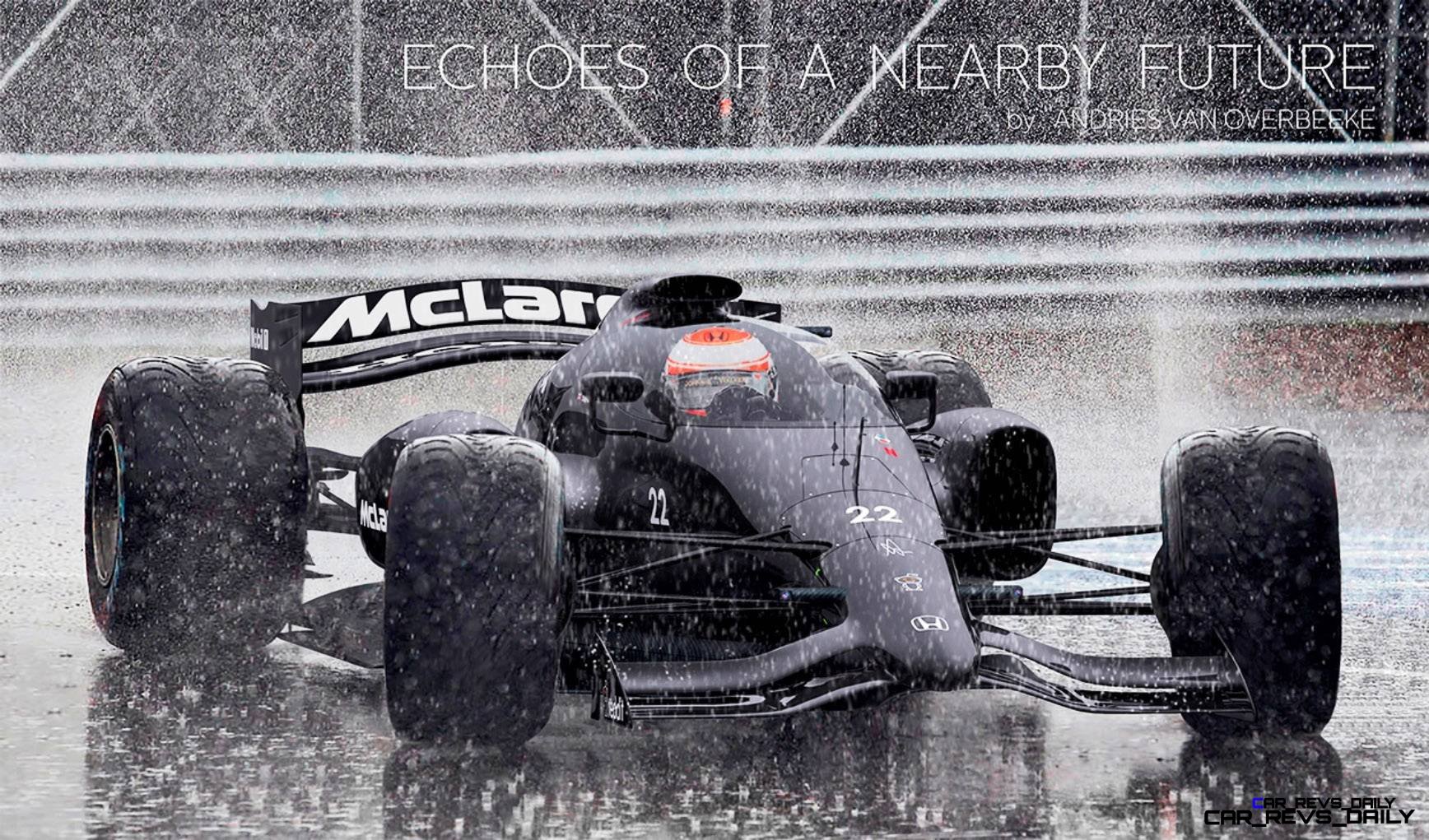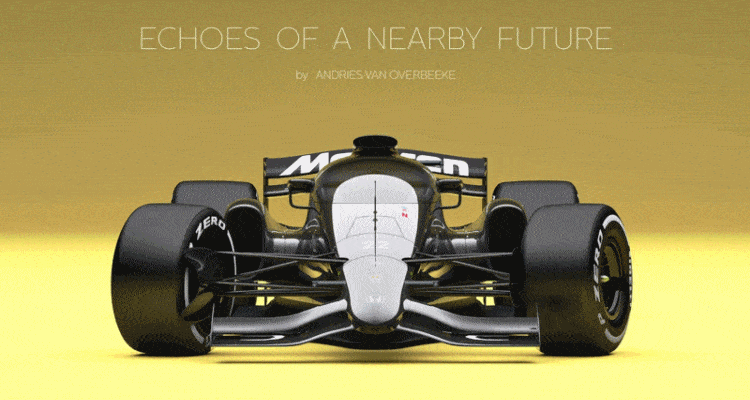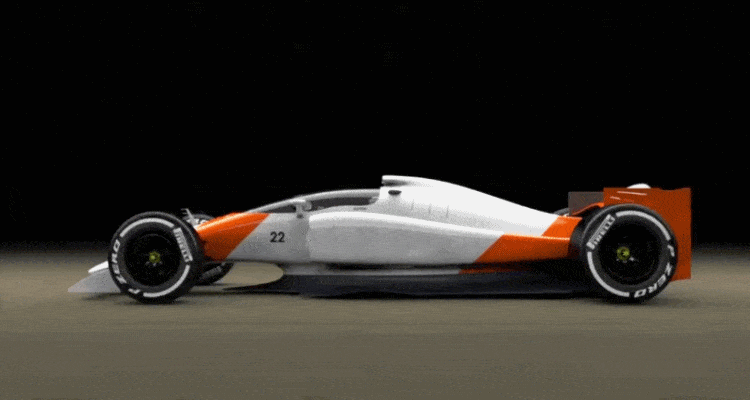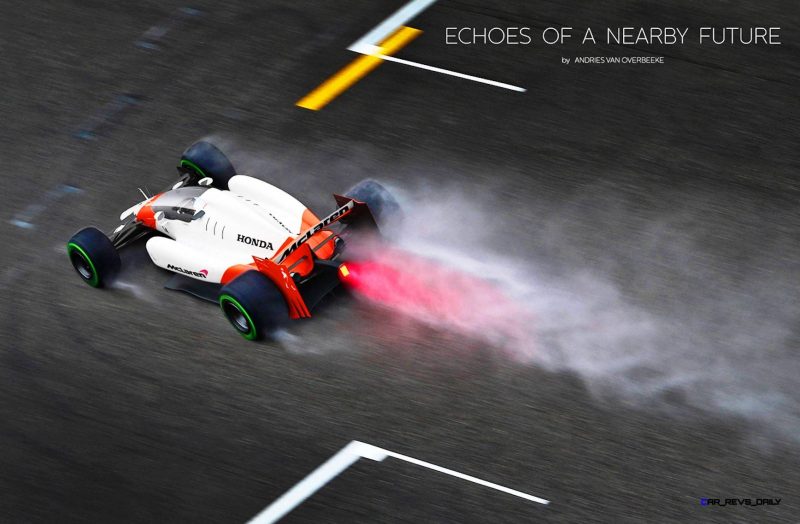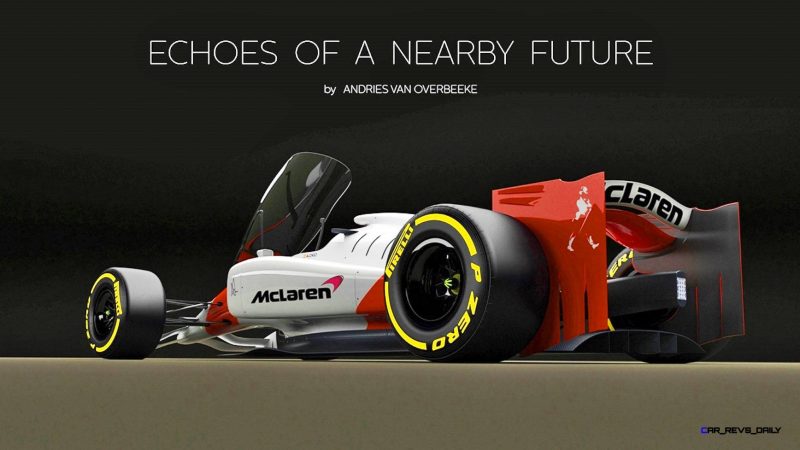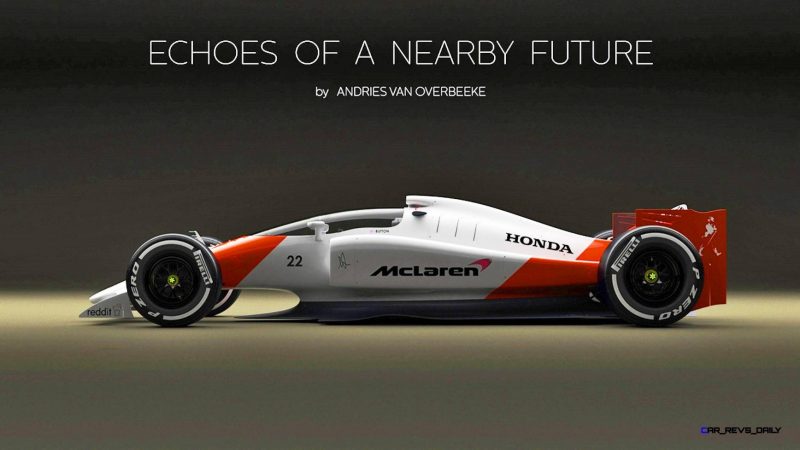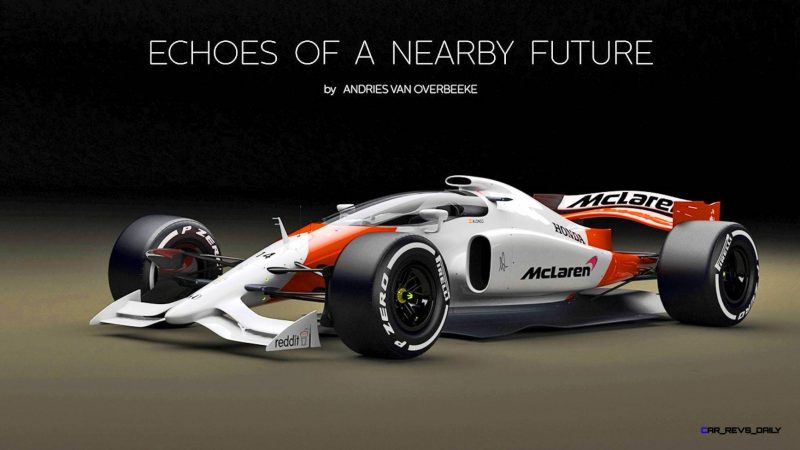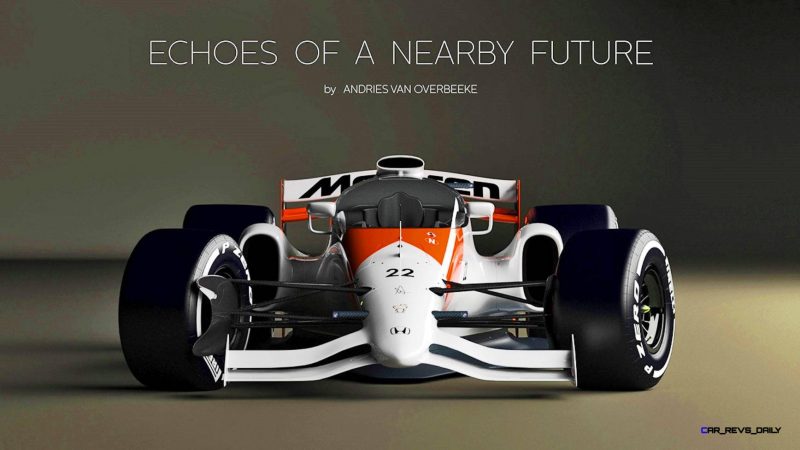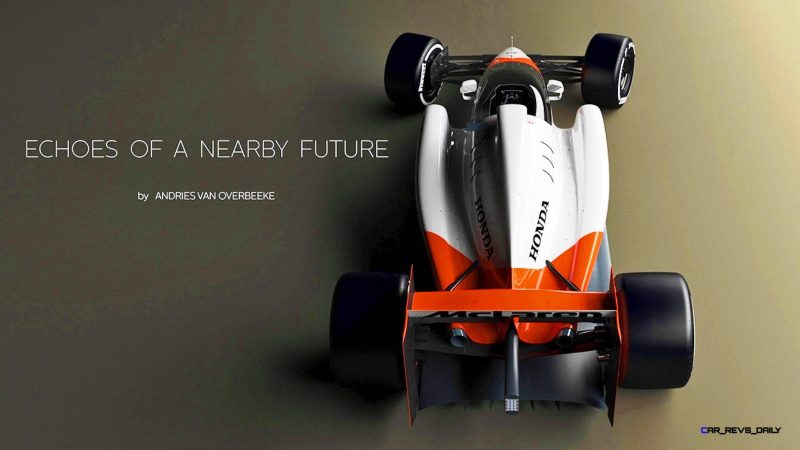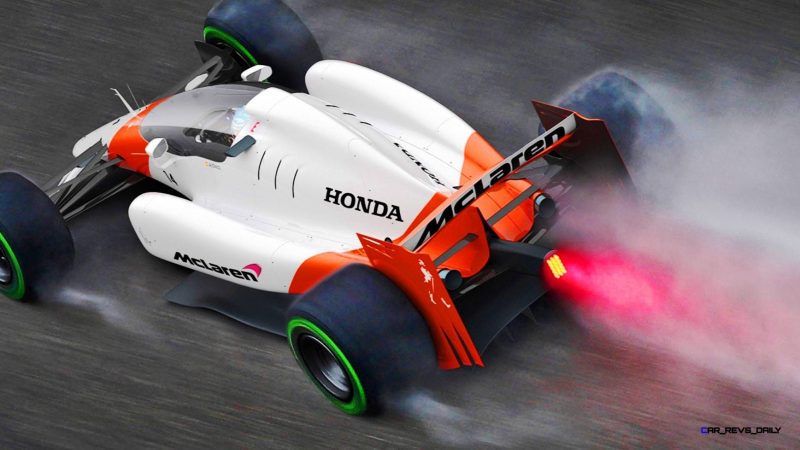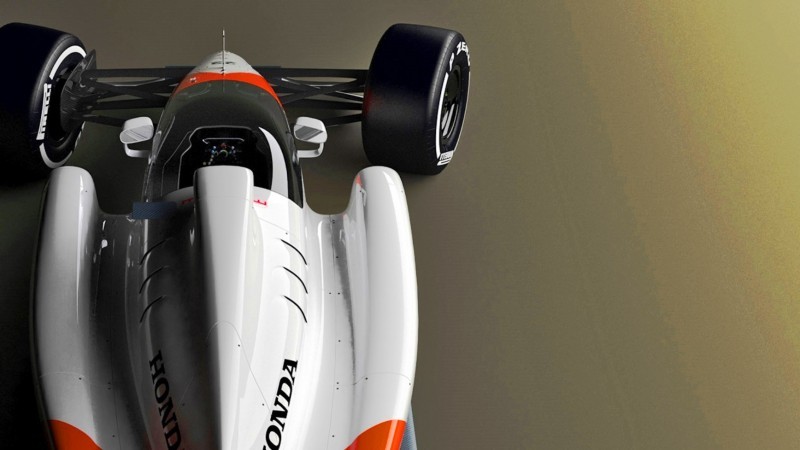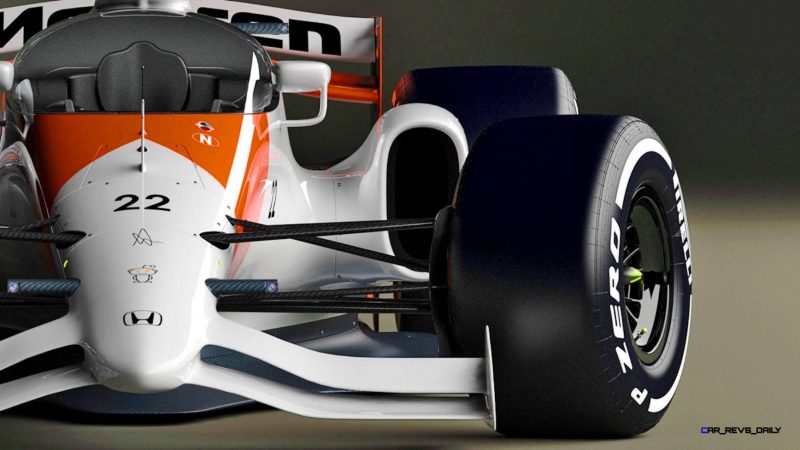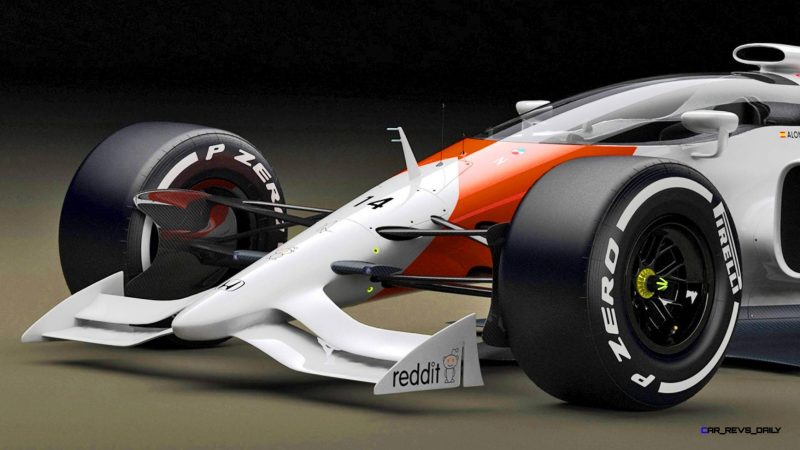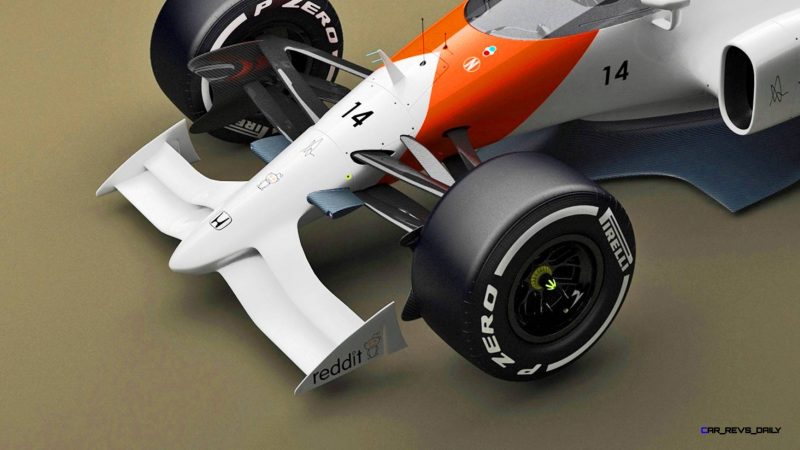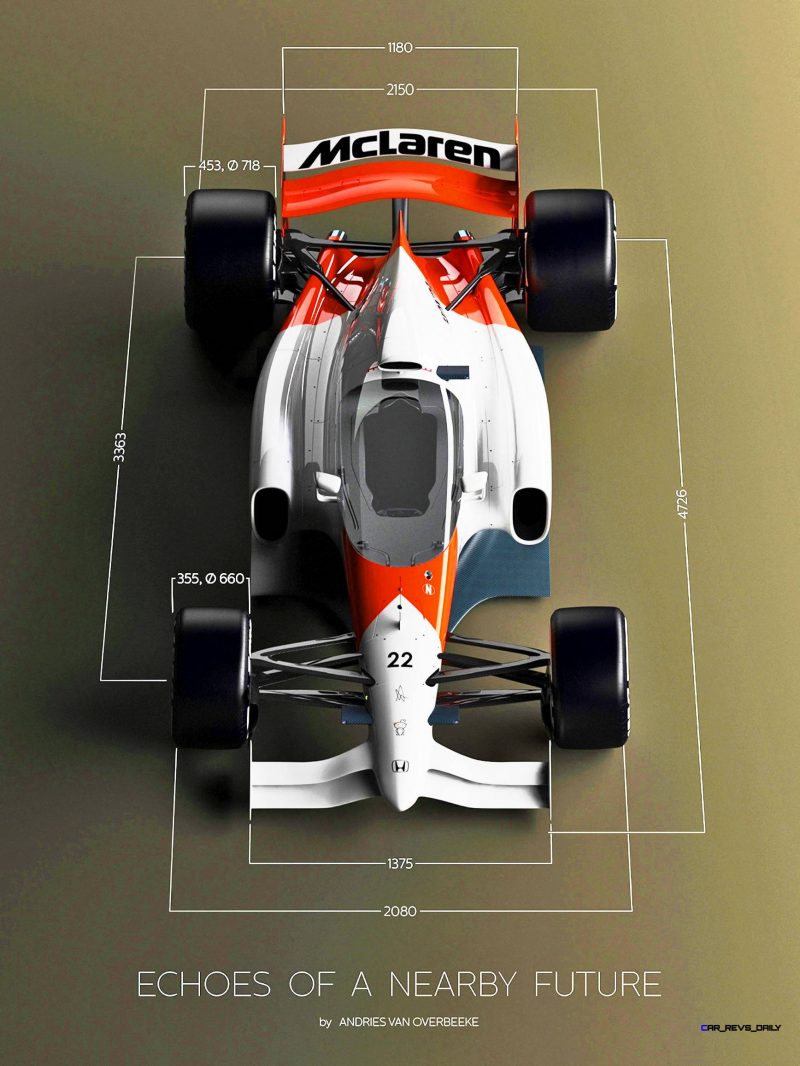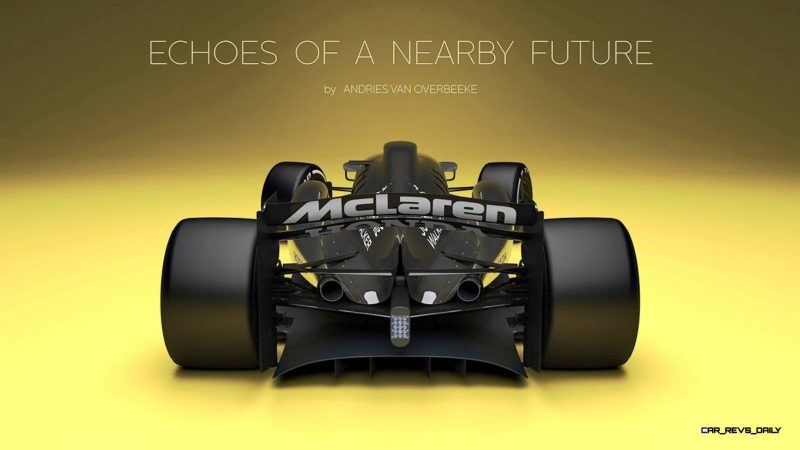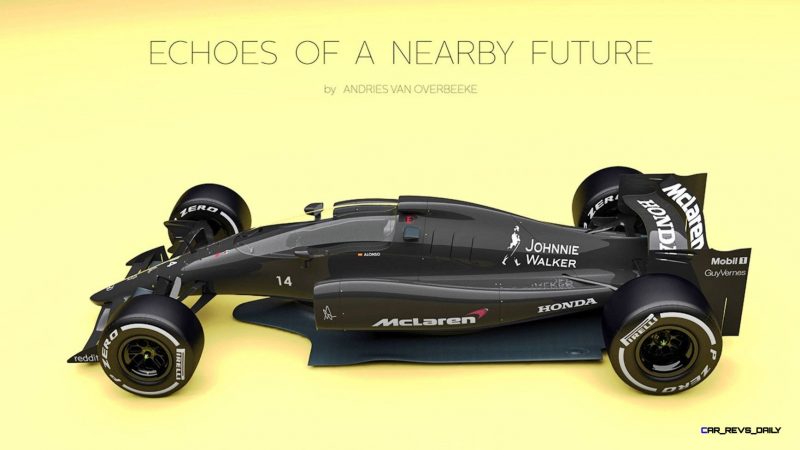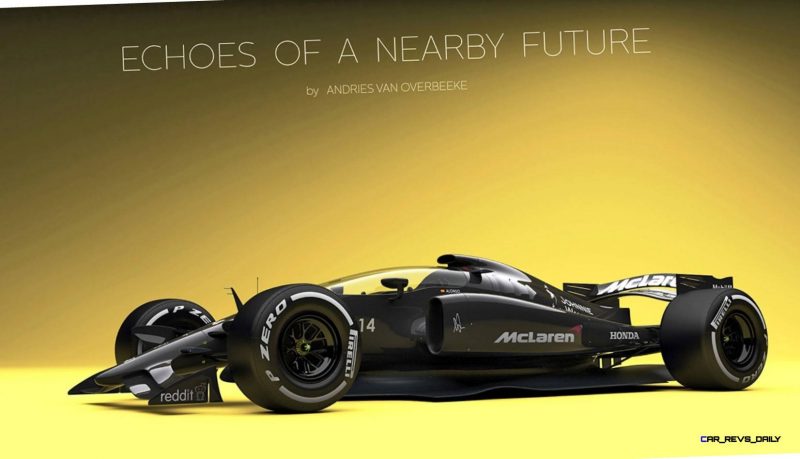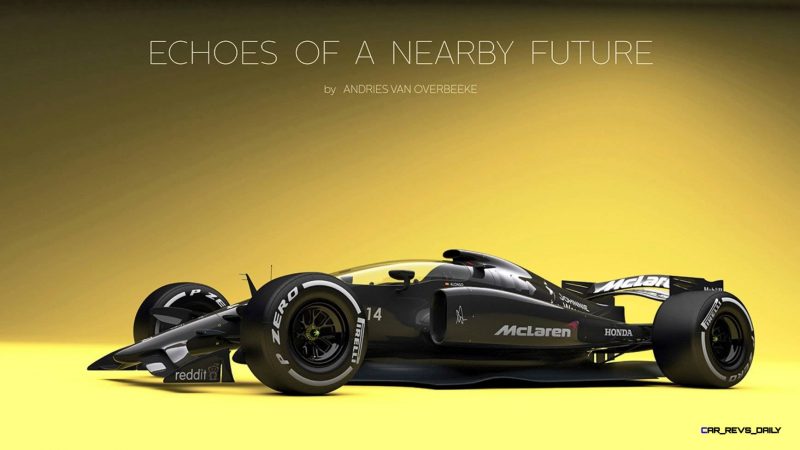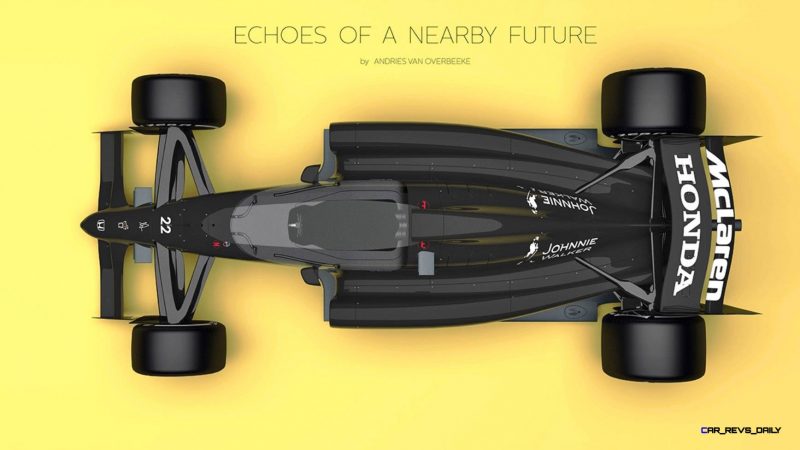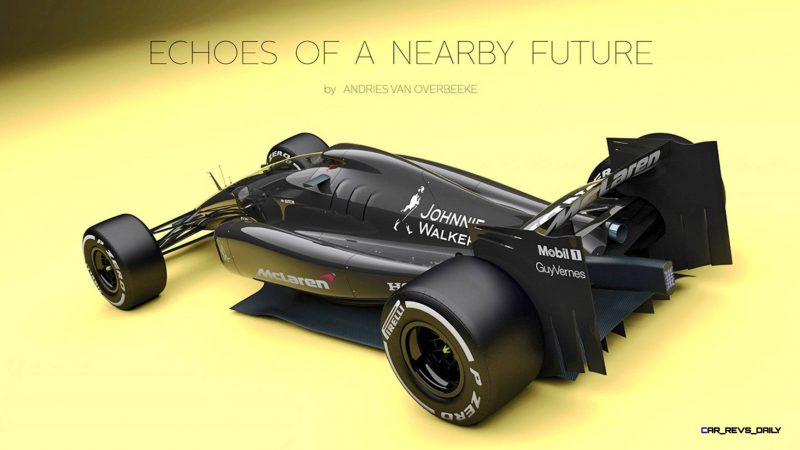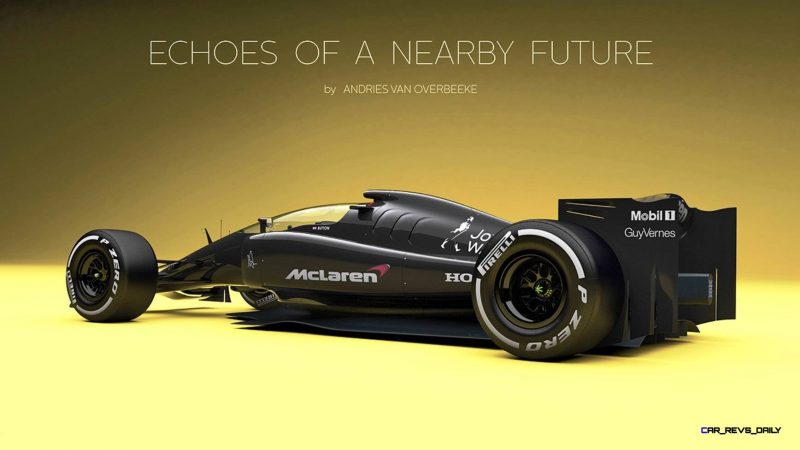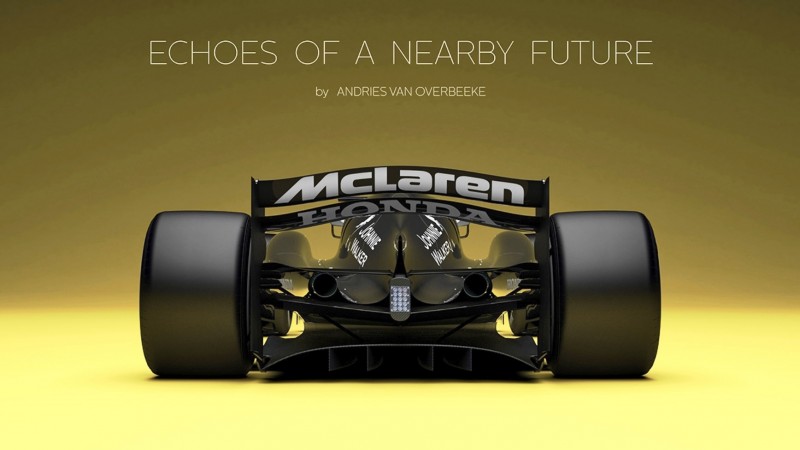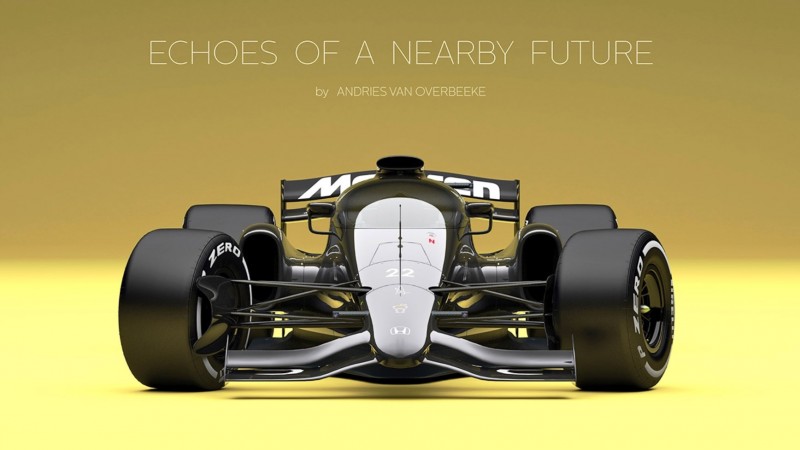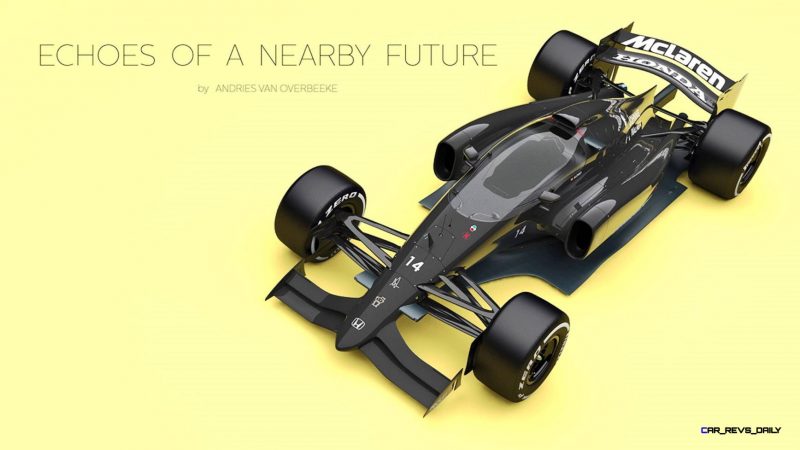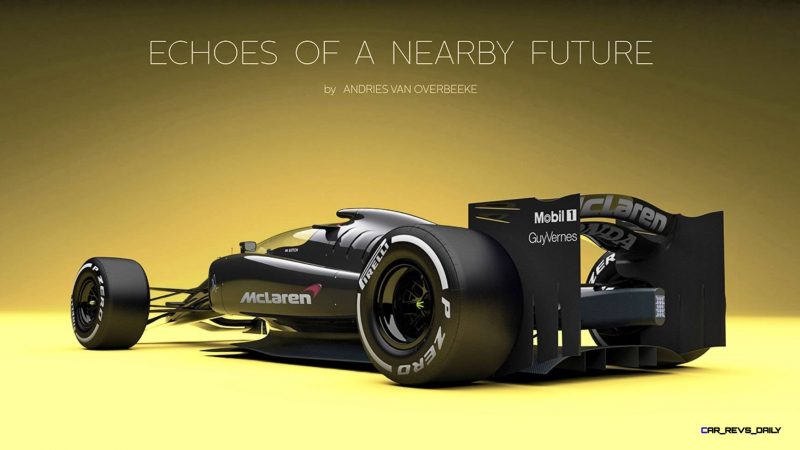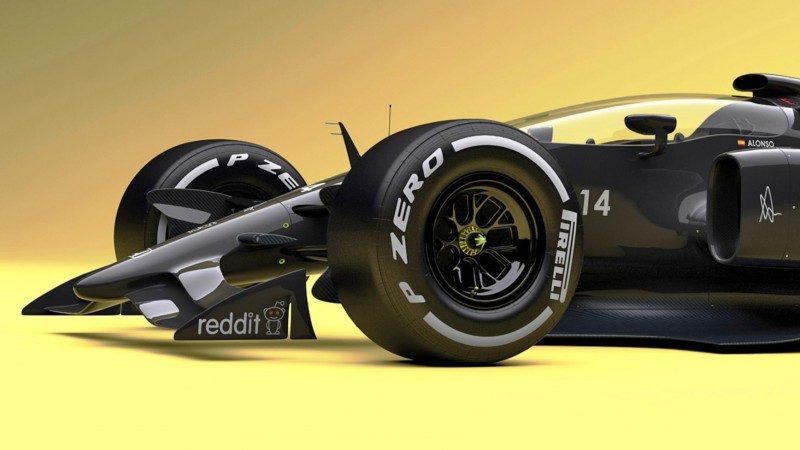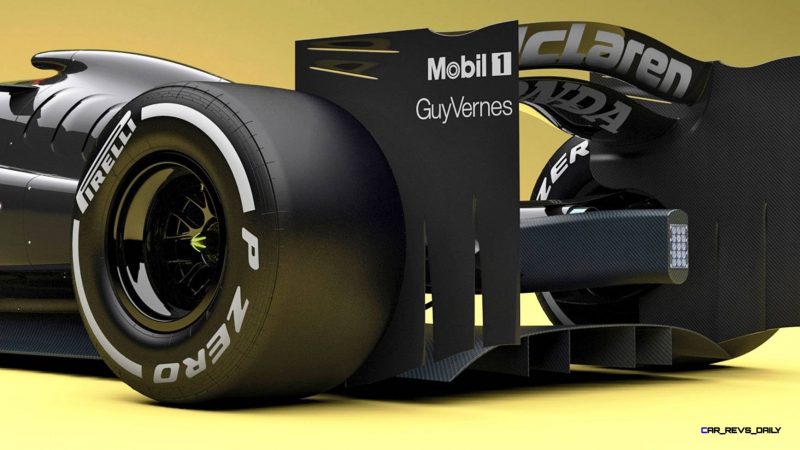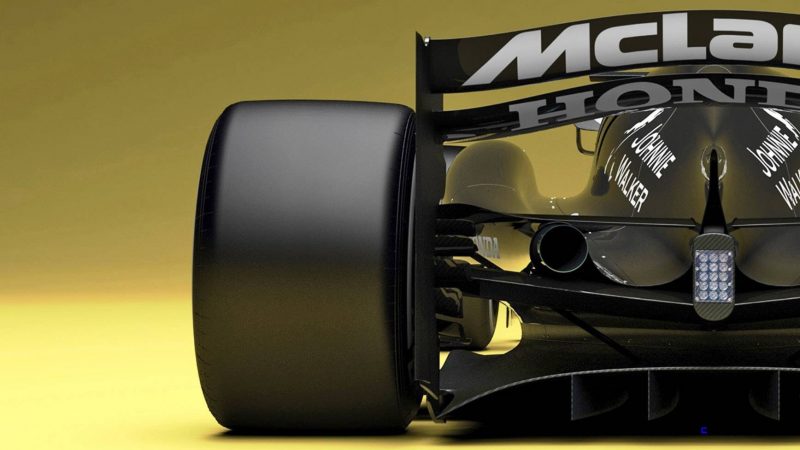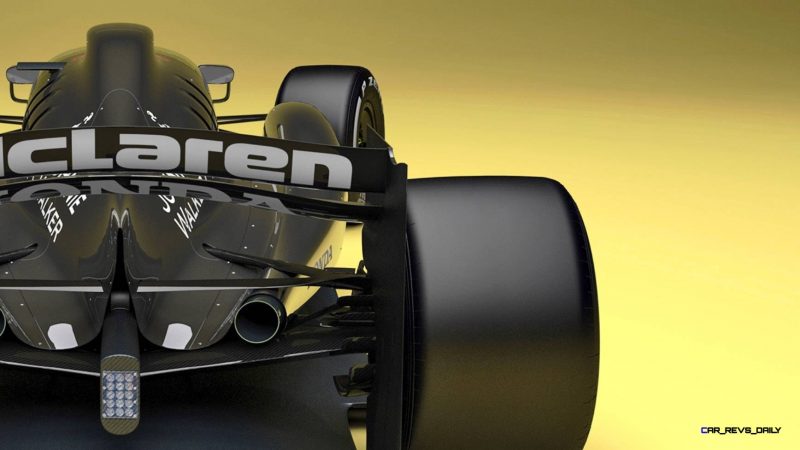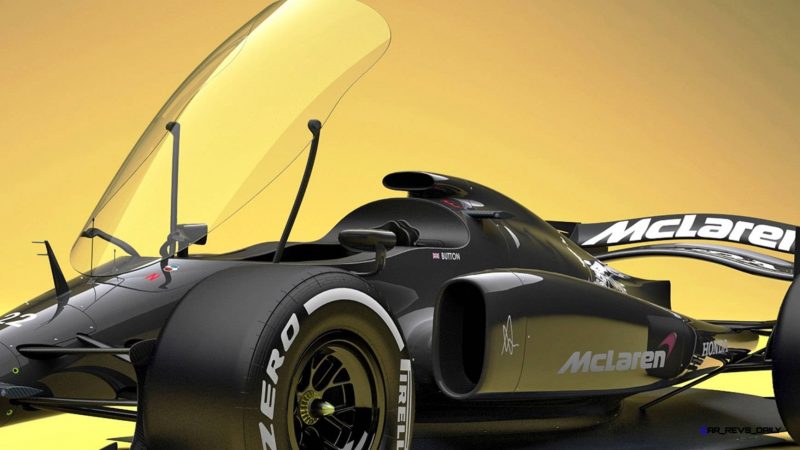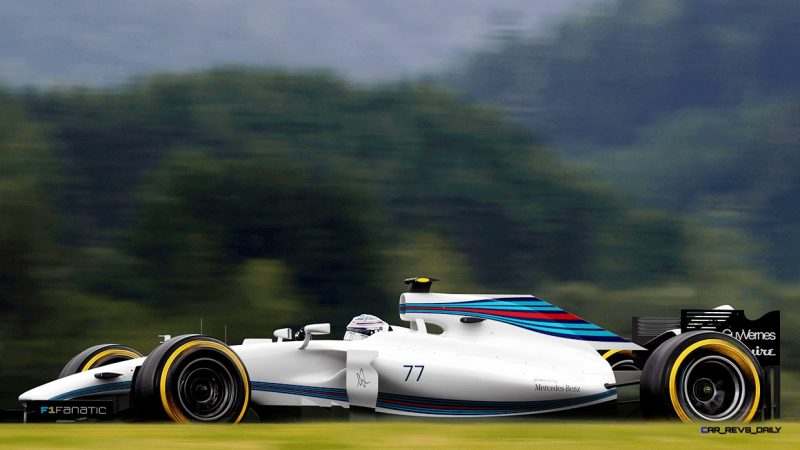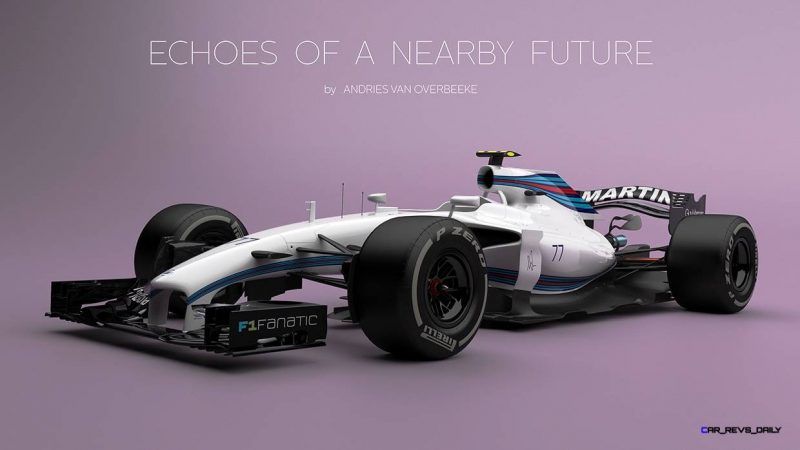Andries Van Overbeeke’s third set of future F1 car designs is his most intriguing yet — thanks to a subtle tweak up top and a revolution down below.
Up top in the Overbeeke F1 McLaren-Honda we have a closed cockpit for the first time. No F1 car has run enclosed in the history or the event. Shaped like a fighter jet canopy, this forward-hinged cockpit promises smoother aero at high speeds and enhanced safety in any accident.
F1 cars have typically been open for practical reasons. Venting exhaust fumes at first, then allowing drivers to be ejected or extracted from a crash, and finally a legacy piece of design of the vehicle shape. That’s right, in 2015 and beyond — there is no reason to accept the limits of a closed cabin. (Aside from driver heat concerns…)
A look at 2015 Indy cars shows how old-fashioned the 2015 F1 car looks lately. Outrageous aero brings multi-vane aero gills and spoilers to both ends — all shaped via wind tunnel voodoo and becoming make or break elements for winning races.
A simpler approach to the visuals of the F1 car design is evisioned by Overbeeke here. A full ground-effect aero skirt lives below the primary cockpit and engine area, sucking the car onto the track — rain or shine.
The new underbody approach lets the car become more traditionally beautiful and low-slung from all sides. A much cleaner nose and tail is most noticeable on these renders.
Will F1 take these next steps in its future car designs? Latest rumbles suggest the cars will be getting faster in the coming years. To cross the 250-mph mark, cabin safety will need to go up — and aero will become more adaptive.
All signs point to Formula One cars entering a rapid evolutionary phase between 2018-2020. Your first look at the future of racing is likely to reflect some of the Overbeeke ideas shown here.
Andries Van Overbeeke – 2019 McLaren-Honda F1 Car Renderings
“There once was a time when the racing world was ruled by savage beasts.”
Andries Van Overbeeke
I made this McLaren-Honda concept to visualize what F1 cars could look like with a closed cockpit. Ever since that week in 2009, with the accidents of Massa and Surtees, I’ve been wanting to visualize that canopies could look good. Of course the driving force behind this isn’t looks but it’s safety. Combined with the current state of F1 it’s important to have something tangible to have a fruitful discussion about the future of F1.
The sidepods are reminiscent of the McLaren that Jenson Button drove to that legendary win in the 2011 Canadian rain. The message of my images on the track is clear: we need to reverse the trend that F1 no longer races in the rain.
Apart from the canopy, the car features wider rear tyres with an increased diameter and the car’s width is increased. The front wing is smaller and less complex to reduce the sensitivity to turbulent air. The canopy encloses the same crash structure that’s currently seen on F1 cars, and the traditional roll bar is no longer needed. For dimensions check the images.
This is part 3 of ‘Echoes of a Nearby Future’, where I explore the design, proportions and regulations of Formula 1 in the near distant future.


A short metaphor about my vision behind the project:
There once was a time when the racing world was ruled by savage beasts. They were captured just before the snowy season, when noble brave men had one winter to tame this creature. After months of championship battle, a handful of the best animals were kept for another winter of training, while the others were set free again. The mixing of the creatures in the wild with their variety of genes gave rise to diversity at all levels. Every hunting season new species were discovered, with unseen traits that were often invincible and sometimes remarkable. We have all heard the myth of the hexapod. But somewhere along the way, things changed.
Once beloved peculiarities were now seen as monstrosities. The eccentric ones became a freaks, and were put down and hunted down untill none were left. Where we once witnessed battles like Dhalsim vs Blanka, these days only one species is left. But not without risk. Although it is strong, lack of genetic diversity leads to weaknesses that can whipe out a whole species at once. There is an ongoing ailment involving nasal deformation, causes by living in the standardised cages. We must set them free. Legend goes that in the remote untraveled fields, savages still roam. Let life find a way.
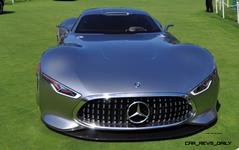
Tom Burkart is the founder and managing editor of Car-Revs-Daily.com, an innovative and rapidly-expanding automotive news magazine.
He holds a Journalism JBA degree from the University of Wisconsin – Madison. Tom currently resides in Charleston, South Carolina with his two amazing dogs, Drake and Tank.
Mr. Burkart is available for all questions and concerns by email Tom(at)car-revs-daily.com.

